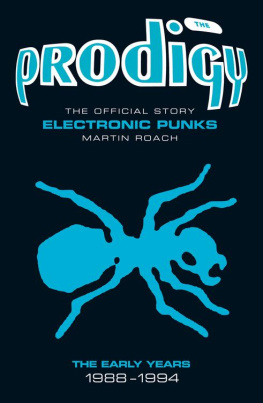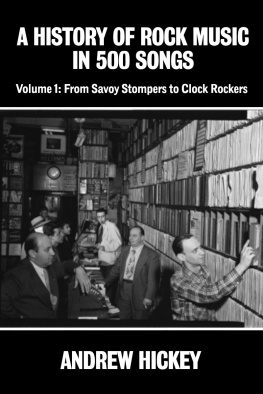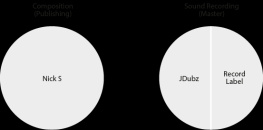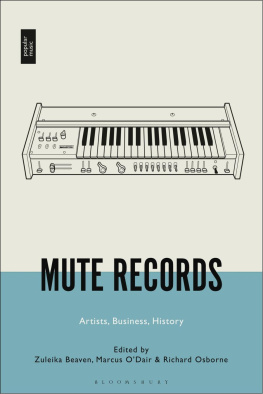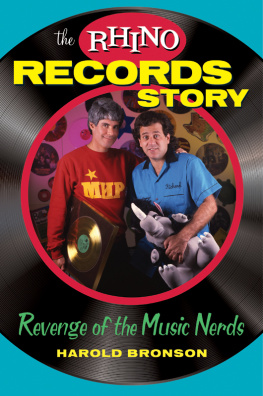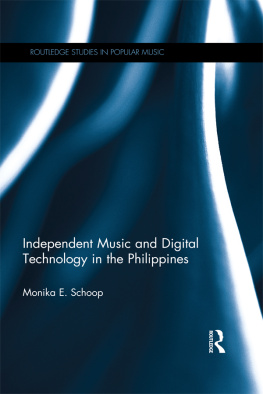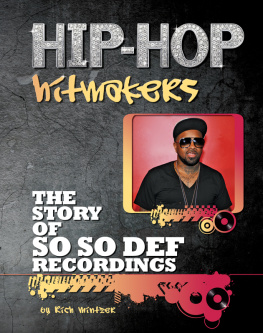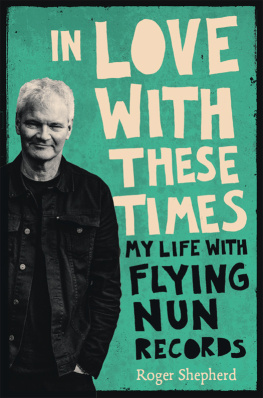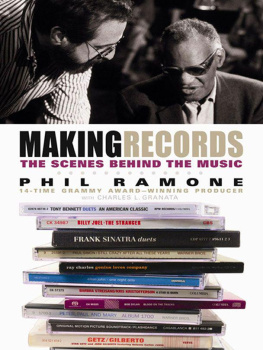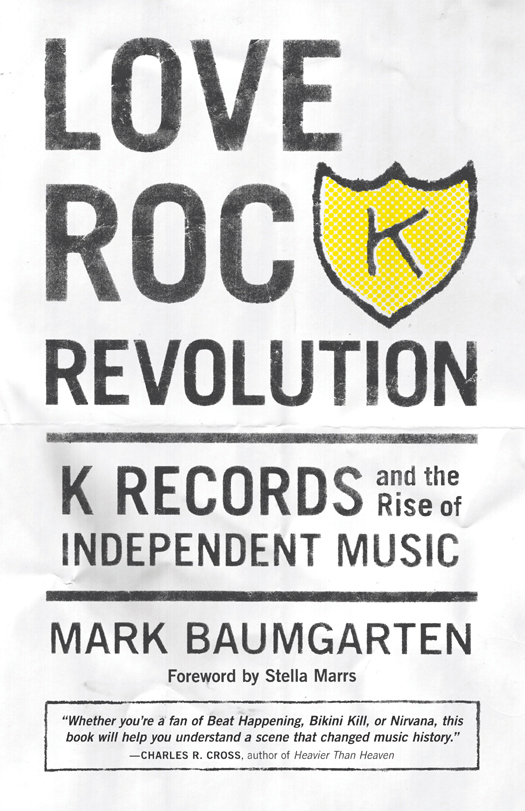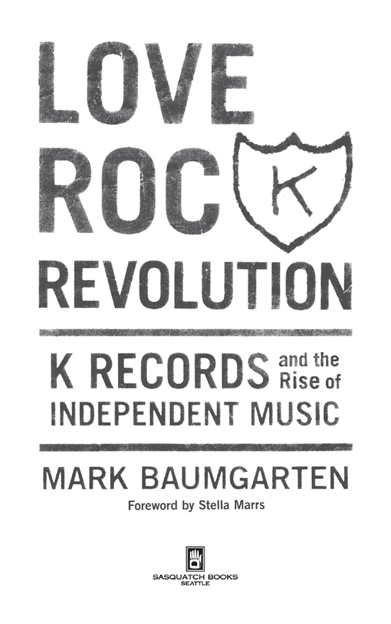Copyright 2012 by Mark Baumgarten
All rights reserved. No portion of this book may be reproduced or utilized in any form, or by any electronic, mechanical, or other means, without the prior written permission of the publisher.
Published by Sasquatch Books
Cover design: Anna Goldstein
Interior design and composition: Anna Goldstein
Interior photographs: Beat Happening concert in Olympia at the North Shore Surf Club, courtesy of K Records ()
Lyrics and logo reprinted with the permission of K Records.
Library of Congress Cataloging-in-Publication Data
Baumgarten, Mark.
Love rock revolution : K Records and the rise of independent music / Mark Baumgarten.
p. cm.
eISBN: 978-1-57061-796-6
1. K Records (Firm) 2. Sound recording industryWashington (State)Olympia. 3. Punk rock musicWashington (State)OlympiaHistory and criticism. I. Title.
ML3792.K2B38 2012
781.660979779dc23
2012001170
Sasquatch Books
1904 Third Avenue, Suite 710
Seattle, WA 98101
(206) 467-4300
www.sasquatchbooks.com
v3.1
CONTENTS
What I Learned in Olympia: A Foreword
by Stella Marrs
PART I
YOUTH
A young Calvin Johnson discovers punk rock, college radio, and the power of the cassette before laying the foundation for K Records and forming the labels most storied band, Beat Happening.
PART II
REVOLUTION COME AND GONE
Olympia plays host to independent musicians from around the world as K Records celebrates the International Pop Underground and helps ignite the riot grrrl movement. Then Nirvana blows up and changes everything.
PART III
GET IN
A new generation of self-reliant artists invades Olympia and takes over Dub Narcotic Studio. Attracted by the promise of a creative utopia, they come searching for the tools to create and find K Records waiting and ready.
WHAT I LEARNED IN OLYMPIA:
A FOREWORD BY STELLA MARRS
THE OLYMPIA I REMEMBER had a culture of a commons. The commons as the party, or show space, or access to tools, or information like mailing lists and touring contacts. Continual sharing of resources was the only way production could happen. There were always chances to play publicly through small house shows and spaces that came and went. Languages developed, and bands evolved from the inspiration of last weeks shows. It was a culture full of examples of making that allowed us to model for each other how to do it.
I have a memory from the early 80s of John Foster performing his epically long song The Kennedy Saga. Against a musical backdrop of physical endurance and repetition, John was rocking back and forth, singing an inventory of the mythic hardships for our dead American hero. The preening cock-rock god of the dominant music culture had been replaced by a new face of virility that was not afraid to cry. I also remember teenaged Calvin Johnson on his knees, surrounded by cardboard boxes, in the living room of a house without insulation that he and I shared on Legion Way. Day and night, day after day, he alphabetized and cataloged a collection of 16,000 records that were being warehoused. It set a new bar for me, witnessing these models of intensity and focus.
Once I came back from a trip and there was a buzz of a new development. There would be an alley show! It was a new way to have a party: an out-of-the-way piece of pavement, a candle, and a guitar. Why not play when the stakes are that low?
Living in a small college town, making experimental work was an isolated activity. You also had to provide a structure for the work to live within. So these early venues for music, writing, and art emerged in order to extend our work locally and beyond. The originators: Mr. Brown, OP Magazine, Sub Pop, Girl City, and K Records. Then later waves: Kill Rock Stars, Punk in My Vitamins, Cha Cha Cabaret, and so many, many more.
But really, how did any of it happen? Circulating beneath this story is a current of desire. It was the underlying engine for everything that happened. A creative culture of individuals surviving by sharing space and tools, and aiming at a series of frenzied public deadlines? Late night waffle parties and shared beds, all that borrowing, arguing, and scraping it together? Totally fun!
INTRODUCTION
LET ME SAY FIRST that this is not my story.
I was born in 1978, just months after the hero of this book received his broadcasting license from the FCC and started playing records at his local college radio station. I grew up in a small farm town in Wisconsin, far from the sleepy, green capital city where this story primarily takes place. Prior to my college years, I had heard of a few of the bands that appear in these pages, but knew the music of only one artist who had released a full-length album on K Records: Beck.
Even if curiosity had led me from Becks breakout major-label debut, Mellow Gold, to the relatively obscure album he released on K Records just a few months later, I probably wouldnt have thought anything of it.
I wasnt lazy or stupid. I just didnt understand that something like K Records could exist. I loved music, but as a kid growing up in a small farm town, there were few places I could discover it. I found it on my parents record shelf, where LPs by Roger Miller and John Denver leaned up against The Dukes of Hazzard soundtrack and Disco Duck. I also found it on Z93, a radio station fifty miles away that played the Kenny Loggins theme from Footloose so often that, despite having never seen the movie, I biked to the local Pamida department store and bought the soundtracka cassette, my first. I played the tape incessantly. When Cyndi Lauper performed on the American Music Awards in 1985, I held my small Panasonic tape recorder up to the television and pressed record.
Never did I imagine meeting Kenny Loggins or Cyndi Lauper. They were more ideas than real people, voices on the radio as distant from me as the astronauts I hoped to someday join in space.
My cousin Kurt provided the gateway to a different type of music. Kurt was eight years older than me and the coolest guy I knew. I remember walking into his room and quickly past a frightening Iron Maiden plaque to stare at a giant poster of Eddie Van Halen holding a ruby red guitar gloriously festooned with haphazard white stripes. A few years later, Kurt went off to study engineering at the University of Wisconsin.
One day he came home from school and brought my older brother Eric a cassette tape with two dozen songs recorded on it. I dont remember them all, but I do know that there was no Van Halen. Instead I heard all of this wonderful, strange music: Don Henley Must Die by Mojo Nixon, Holiday in Cambodia by the Dead Kennedys, and my favorite, Punk Rock Girl by the Dead Milkmen.
My brother and I listened to the tape constantly, we fought over it, and when we heard that the Dead Milkmen would be playing in that big town fifty miles away, we went. There, in a little, dark all-ages club, we saw a band play live, close enough to touch. We screamed and we danced and then we went home, exhausted but exhilarated.
This isnt a book about the Dead Milkmen. What happened that night of my first concert, though, is what this book is all about. At that moment, dancing wildly to my favorite band playing my favorite song, music changed for me. It was no longer about listening; it became about joining in. When I moved to Minneapolis, I started writing about music, putting on all-ages shows on Sunday afternoons at a bar near campus, guest DJing at my campus radio station, and playing music with friends in drafty lofts and practice spaces. Eventually I moved to the Pacific Northwest to focus on writing and to be part of the flourishing independent music scene in Portland, Olympia, and Seattle. I soon discovered that the things I had been doing in Minneapolis were of the same sort that served as the foundation for the culture of independence that sustained the Northwests wealth of fearlessly inventive artists. As I dug deeper into the history of the Northwest artists I lovedElliott Smith, Built to Spill, Modest Mouse, Sleater-Kinney, NirvanaI discovered a common root: K Records. As I explored K Records, I discovered new favoritesBeat Happening, Heavenly, and, most of all, the Halo Benders. What I didnt discover was much of a coherent narrative about how all of this amazing music came from the same place. More puzzling to me was how K could be responsible for so much and still be so obscure. There must be a story here, I thought.


